Your Questions About Refurbished Electronics Answered
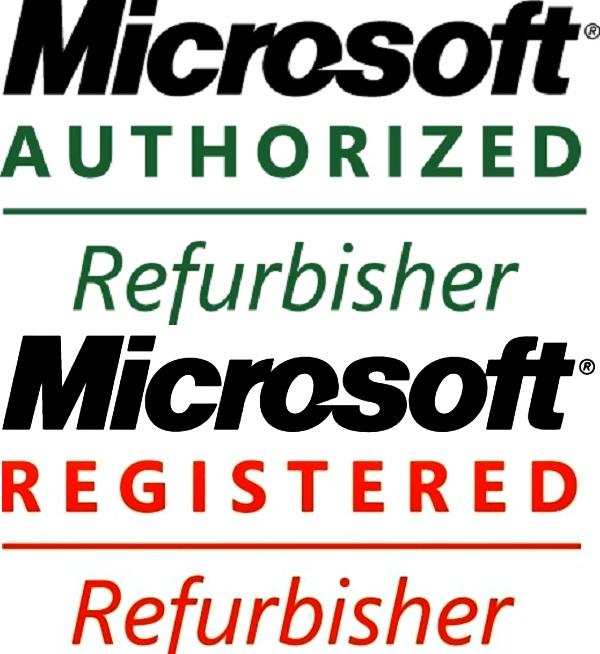

By Ronnie Deaver
Running a business is expensive, and it makes sense to be frugal in any way you can. Everyone likes a deal, but you have to be careful when that deal is on big-ticket items for your company, like laptops.
Many of the great prices you'll see on newer consumer electronics are only possible because the products aren't actually new — they're refurbished. Obviously, you want to get as much mileage as possible out of your company's equipment. But how much do you know about refurbished electronics? Would you buy them? Would you sell your company's old equipment? Let's take a look at the most asked questions about refurbished electronics.
The 7 most asked questions about refurbished electronics
1. What does refurbished mean, exactly?Refurbished (or reconditioned) electronics are items that have been previously purchased and restored to “like new” condition before being resold. There are many reasons a product may be considered refurbished — best case, they were simply returned without being opened. Worst case, there was hardware failure that required extensive repair and replacement. In most cases, you won’t know why a piece of equipment was refurbished — it could be as minor as a scratch or dent.
2. What are the benefits of buying refurbished electronics?
Refurbished electronics are, of course, cheaper than new equipment. That’s the biggest benefit of buying used — especially if “used” means that someone bought something and returned it without even opening it. Buying a refurbished item also helps sustainability efforts by re-purposing equipment that might otherwise be trashed.
3. What are the pitfalls of buying refurbished?
The biggest pitfall of buying refurbished is that you often don’t know the item’s history. You don’t know if you’re getting a dud or a great deal—and you may not know until you’ve used the equipment for a while.
4. Are refurbished electronics “green”?
While not technically “green”, buying refurbished equipment does give the electronics a longer useful life, preventing the need for new equipment, and thus, reducing the amount of new resources used and products thrown away.
5. Are my company's old computers worth anything?
Technology moves at breakneck speed, and many electronics simply aren’t built to last—they’re built to last a few years at most. Because of this, your old equipment is probably not a good bet for refurbishing, as the market is quite small. However, if your computers are only a year or two old and in good condition, you may be able to re-sell them and recoup some of your investment. If you work with a certified IT asset disposition company/recycler, some of these companies offer options for reselling eligible equipment.
6. If I sell my company's old equipment, how do I make sure company data is safe?
If you’re reselling equipment instead of recycling, then you’ll need to make sure your company’s data is destroyed. It’s not enough to delete important files; you’ll need to use specialized software to keep your data safe. If you're outsourcing a company, make sure they provide certificates of destruction and are up to par with NIST and DOD standards.
7. What do I look for to make sure I don’t buy a “dud”?
Don’t buy the stigma that “refurbs” are inherently faulty. Just be smart about your shopping!
Tips for finding quality refurbished equipment
- Buy “factory reconditioned” or “factory certified” items—these have been tested by the manufacturer before being sold.
- No warranty? No sale. The product should come with a warranty or the ability to return the item within a certain amount of time in case you find not all problems are resolved.
- Choose a reputable retailer. Whether you’rebuying online or in store, you should only buy used equipment from a reliable source, such as a Microsoft Registered/Authorized Refurbisher.
- Consider your needs now and in the future. Is the equipment you’re buying going to meet your needs for at least the next year or so?
Refurbished equipment can be a great deal for many frugal and sustainable companies—just make sure you’re making a safe purchase.
Image courtesy of the author
Ronnie is the Marketing Manager for ICT Asset Recovery. He loves swing dancing, wine, responsible recycling and adventuring around the world. A recent transplant from Texas, he’s been soaking in the Boston scene and diligently working with ICT to promote the message of responsible e-waste recycling.
Follow ICT on Twitter! @ICTasset
Replenish Africa Initiative Brings Clean Water to Millions
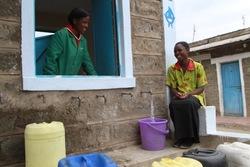

Submitted by RP Siegel
Water is a resource that most of us take completely for granted. Thirsty? Just walk over to the sink and turn on the faucet; or head over to the fridge and grab a cold drink. Yet, there are an astonishing number of people in the developing world who could not even dream of doing such a thing. As many as 300 million Africans are living today without access to a dependable source of clean, safe water for drinking, cooking, washing, growing crops, or any of the essential things we use water for every day. Therefore, sustainable access to clean water is a catalyst for development across the African continent. Now, a collaborative effort, known as the Replenish Africa Initiative (RAIN), is working with communities and water service providers across Africa to help address the critical issues associated with lack of water access. RAIN is on pace to provide clean water access for over 2 million people by the end of 2015 and 6 million by the close of 2020.
A key strategy for reaching this many people is partnering with utilities to create and improve service for lower income communities. Take Madagascar, for example. Of the 2.2 million people living in Madagascar’s capital city of Antananarivo, nearly half lack access to clean water and sanitation services. That’s close to a million people. RAIN, a flagship water access program of The Coca-Cola Africa Foundation (TCCAF) has partnered with an organization known as Water & Sanitation for the Urban Poor (WSUP) to help bolster and strengthen the water distribution infrastructure. A total of three projects in Madagascar have provided water to 322,000 people, while saving over one billion liters from being wasted from leaky pipes.
Says Julie Ranaivo, WSUP’s Program Coordinator, “WSUP’s fundamental approach is to develop sustainable services at scale, by empowering service providers and key stakeholders and strengthening their capacity.” They work with the local water utilities (in Antananarivo, it’s JIRAMA), municipalities, and local communities to develop solutions. The result has been widespread improvement in health, job opportunities for women, and enhanced livelihoods for the people of Antananarivo.
This is extremely important in light of the many forces that have already begun changing the face of Africa. The African population is expected to double in the next twenty years. That will certainly strain an infrastructure that is still largely undeveloped. And while the effects that climate change will have on rainfall patterns and temperatures are not entirely predictable, the data indicates that it can be expected to add to the challenge. Meanwhile, it has been estimated by the World Health Organization that ensuring that all Africans have access to clean, safe water can add $33 billion to the African economy.
In addition to the three projects in Madagascar, RAIN is supporting projects in Kumasi, Ghana; Naivasha, Kenya; Maputo, Mozambique; Kampala, Uganda and Lusaka, Zambia. Each project is a little bit different. For instance, in Kenya, there is a problem with an excess of naturally occurring fluoride in the water, which was causing a number of health issues. WSUP partnered with the Nakuru De-fluoridation Company (NDC) to establish water treatment, storage and distribution networks in Naivasha’s settlements. It also has a component to raise awareness around safe hygiene and sanitation. Water kiosks have been constructed with storage tanks and a fluoride filtration system. Workers also rehabilitated boreholes, increasing water supply and expanding access to clean water to all inhabitants. Other projects have more emphasis on sanitation and solid waste management.
Altogether, with support from RAIN, more than 495,000 people have received water service, 1.5 billion liters of water have been saved, at a total expense of $9.5 million, more than half of which came from TCCAF. Other contributors include: U.K. Government Department for International Development, Netherlands Embassy via Vitens Evides, Department for International Development, AusAid, Century Bottling Company, Music for RAIN, National Water and Sewerage Corporation, Water and Sanitation for the Urban Poor, Water and Sanitation for the Urban Poor, USAID, UK Aid DID, and Wasser fur Wasser.
Besides providing infrastructure support, the program also provides training in valuable skills such as leak detection as well as management. These critical components serve to strengthen the local water utilities, upon whom, so much will soon come to rest.
The challenge in bringing outside aid to Africa to improve living conditions for the many people living in poverty has always been a question of scale. Here is an approach that appears to be enjoying some real success in that regard. It is clear that that the joint participation of civil society, government and the private sector is key to making it work.
Food Waste Numbers Improve, Slowly
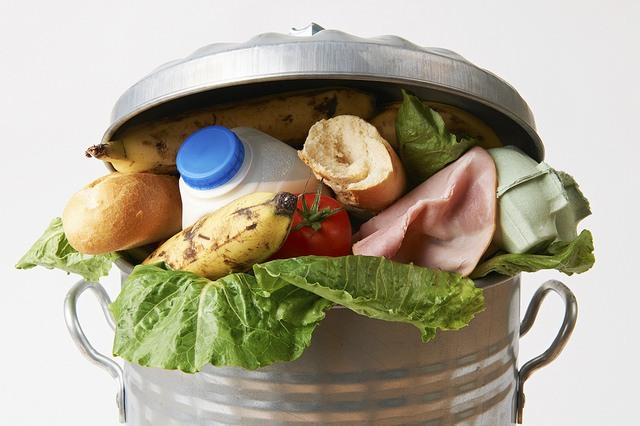

The Natural Resources Defense Counsel (NRDC) shocked the nation in 2012 when it released its report, Wasted: How America is Losing Up to 40 Percent of its Food from Farm to Fork to Landfill. How could we actually waste such a large amount of food, and have so little national awareness of the issue? Suddenly, we were all rummaging through our refrigerators to repurpose leftovers or make soups out of wilted vegetables.
According to the report, getting food "from farm to fork" consumes 10 percent of the total U.S. energy budget, uses 50 percent of U.S. land, and claims 80 percent of its freshwater. While 1 in 6 Americans lack food security, we are disposing of the equivalent of $165 billion in wasted food. Sadly, this wasted food ends up in landfills, where it rots away and emits methane, a potent greenhouse gas. Reversing this trend requires a triple-bottom-line solution, bringing together companies, consumers and the government.
Now, three years later, TriplePundit spoke with Dana Gunders, the author of the report and staff scientist in food and agriculture for the NRDC. What has changed in the last three years regarding food waste?
"In terms of it becoming a priority, there has been a lot of progress," she told us. "There is increased awareness of food waste. I think we have made a lot of progress in airing the issue and getting it out there and we have made an incremental bit of progress in the actual amount of food that we’re wasting."
Cultural shift
Many cultural factors are at play, causing food to end up in landfills. Americans waste 50 percent more food than we did in the 1970s. What has changed since then?
"In restaurants, portion sizes have grown a significant amount," Gunders explained. "Either we are eating that extra food, and that is an issue, or we are not and food is getting wasted."
We spend less of our income on food today than we did 30 years ago. Food is relatively cheap in America, and therefore undervalued. Throwing out food doesn't seem to take a large toll on household budgets, so it is widely done without a second thought.
It is also now common to load up on food at Costco and other warehouse stores, for convenience and bulk discounts. "We shop in bigger quantities than we used to," Gunders continued. "We have lots of big-volume stores, and I suspect that makes us waste more. We now have bigger refrigerators, cars and shopping carts – leading us to buy more food.
"Over the years, consumers have been conditioned to expect every food choice to be available in the grocery aisle at all times, so grocery chains are fully stocking every choice," added Janice Neitzel, principal of Sustainable Solutions Group. "This has led to food waste, as perishable meat, milk, eggs and produce expire quickly. But out-of-the-box thinking like donating food and composting can reduce food waste."
There is also a very high aesthetic standard in grocery stores for fruit and vegetables, and many pieces don't make the cut. It is common for perfectly edible produce to have little blemishes or deformities, but this imperfect produce rarely ends up on supermarket shelves. Farmer's markets offer an opportunity to reduce such waste, by selling irregular produce at a discount.
The Ugly Fruit and Veg Campaign embraces the inconsistencies in produce that Mother Earth provides, working to shift our cultural view on the need for uniform produce. This organization seeks to cut back on the 26 percent of produce that never makes it to grocery shelves.
In an effort to close the gap between awareness and actions at home, Gunders wrote the "Waste-Free Kitchen Handbook: A Guide to Eating Well and Saving Money By Wasting Less Food." This book is packed with information on efficient storing techniques, smart purchasing tips and recipes.
Capturing business opportunities
Reducing waste and opening up new revenue streams can benefit the bottom line. Savvy companies can identify food waste in the supply chain and find opportunities to reduce costs.
For example, bent carrots can be cut into baby carrots, or stray grapes that fall off the vine can be packaged into single kid servings of grapes or added to a fruit salad. Restaurants can more efficiently store perishable foods and use waste management technology to assist in planning.
Government action
Shifting around market forces to encourage sustainable practices, however, can help slow down the food-to-landfill pipeline. Because companies typically do not pay the true cost of waste disposal, other market forces need to compensate to encourage sustainable practices. For example, most businesses don't pay for the carbon emissions generated from waste hauling -- or for the methane emissions from decomposing organic waste.
A few states have commercial food bans, with Massachusetts leading the nation. In 2014, it enacted a ban mandating 1,700 of the state's large commercial food waste generators to divert organic waste from landfills. Such legislation encourages corporate food donations, composting, re-purposing waste into animal feed and other creative solutions.
Improved tax incentives for donating food would help minimize food waste and increase food security for low-income Americans. Feeding America is calling for stronger tax incentives to boost food donations.
As Neitzel pointed out in her new white paper on sustainable sourcing for private brand owners, there are some market forces that encourage food donations that are already in effect. "While some private brand owners remain hesitant about sending their private brand to food banks because of liability or consumer concern issues, there is U.S. legislation offering brand owners liability protection in the Bill Emerson Good Samaritan Act," she wrote.
The Obama administration recently announced a goal to reduce food waste in the United States by 50 percent by 2030. "That is not a legislation, but it goes along with the social progress of the issue [by demonstrating increased awareness]," Gunders told 3p. "It indicates real progress on the issue, as the USDA and the EPA are examining what they can do with their influence to reduce food waste."
Image Credit: 1) Flickr/U.S. Department of Agriculture 2) Flickr/Alex Juel
As Droughts Worsen, Food Companies Take Action on Water Risk
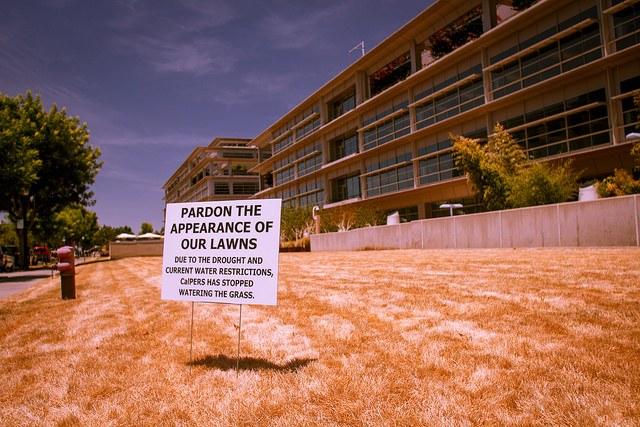

The food sector uses 70 percent of the world’s freshwater. At least 20 percent of the water used to irrigate crops is non-renewable and comes from groundwater basins that are being rapidly depleted. To put it another way: Eight percent of the world's crops rely on non-renewable groundwater.
So, what is the food sector doing about these water risks?
On World Food Day earlier this month, seven food and beverage companies agreed to publicly disclose how they are managing water risks. The companies include Dr Pepper Snapple Group, Hain Celestial, Hormel Foods Corp., Kraft Heinz Co., Pinnacle Foods, Tyson Foods and WhiteWave Foods. They have agreed to report to the 2016 CDP Water Questionnaire on their water risks, their strategies for managing them, and their progress.
Perhaps a Ceres report released last summer, which scored 37 companies based on water risk management, influenced these firms to disclose their water risks. The report gave all seven companies low scores. Pinnacle Foods scored a mere 1 on a 1-to-100 scale, while the other six companies also had low scores:
- Kraft Heinz: 6
- Hain Celestial: 8
- Tyson Foods: 8
- Hormel Foods Corp.: 11
- WhiteWave Foods: 11
- Dr. Pepper Snapple Group: 15
Another factor influencing the companies is investor pressure. In August, a group of 60 investors collectively managing $2.6 trillion in assets sent letters urging 15 food companies to disclose water risks and how they are managing them.
Or, as Eliza Roberts, who is the manager of the Ceres Water Program, told me: Investors recognize that "water should be at the core of a business strategy, particularly for food companies that require so much water for the production of food.” Investors are “ focusing more on these issues," she added. "They want more information about what companies are doing to evaluate their water risks and how they're actually responding to it."
The financial impact water risks pose is still another factor in these companies' decision to disclose water risks.
“We know that these risks pose huge material and financial impacts to companies such as disruption of operations and operating costs,” Roberts said. “It's clear these risks are translating into financial impacts. Companies are seeing it, and they're starting to disclose a lot more in their financial statements and 10-Ks about their risks.”The Ceres report highlighted the financial impacts associated with water scarcity, which include:
- Cargill reported a 12 percent drop in 2014 fourth-quarter profits as a four-year drought in the U.S. Southwest damaged pastures used to raise beef.
- The Campbell Soup Co. experienced a 28 percent drop in its California-based carrot division profits in early 2015 partly due to drought followed by intense rains.
- GrainCorp, Australia’s largest agribusiness, reported a 64 percent drop in 2014 profits due to a prolonged drought that reduced grain deliveries by 23 percent and almost halved grain exports.
- Unilever estimated that natural disasters linked to a changing climate cost the company about $400 million annually.
How companies can lead the way
The Ceres program, Connect the Drops is "great example," in Roberts' words, of how companies can practice water conservation and educate people about it.An initiative established last year, its goal is “to elevate businesses in protecting fresh water in the state of California,” Roberts told 3p.
A number of companies signed on to the program’s declaration, which proclaims: “Water is the lifeblood of California ... It is central to our communities, our economy and our natural resources.”
Ceres is working with the participating companies “to be much more active in advocacy and policy efforts supporting key bills and legislation,” Roberts said. And Ceres is seeing “a lot of interest from companies in this, particularly those that really have a stake in the California economy, and a lot from food and beverage companies,” she added.
Image credit: Kevin Cortopassi
Ford Turns to the Gecko to Solve Its Stickiest Recycling Problem
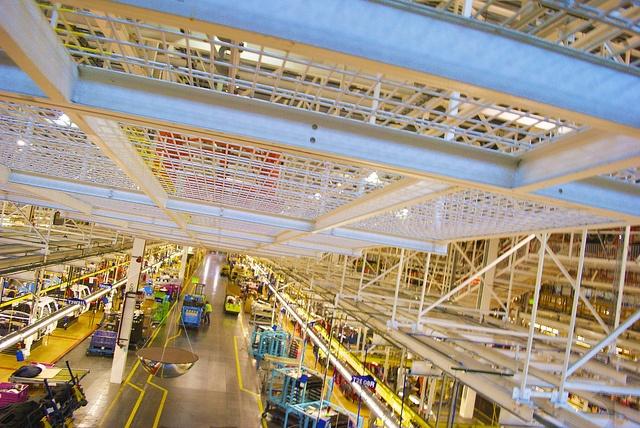

It taught us to fly. It revolutionized our fastest land travel. And it taught us how to keep our pants from falling down without a zipper or a button.
Biomimicry -- using nature to find solutions to the world's most challenging or creative questions -- has been in force for centuries. A 19th-century Catalan architect, Antoni Gaudi, looked to the canopy structure of trees to build the Spanish church La Familia Sagrada in Barcelona. The Wright Brothers mimicked birds in order to teach themselves how to become airborne. Japanese bird-enthusiast and engineer Eiji Nakatsu used the unique design of the kingfisher's beak to figure out how to pierce the atmosphere with maximum speed, leading to the Shinkansen Bullet train. And of course, the mimicry you might not have expected: Swiss engineer George de Mestral's use of the burdock burr in the 1950s to figure out how to create what eventually became known as Velcro.
Today, biomimicry is a studied science and recognized as an asset for numerous applications. The most recent to be considered, however, strikes at the very issue we seem most concerned with these days: reducing our waste stream. Ford Motor Co. has found an unusual ally in its efforts to divert waste and increase the reuse-potential of its car parts: the gecko.
The tiny, web-footed reptile has an unusual secret that scientists would like to get to the bottom of: how its sticky toe pads allow it to climb and maintain its grip on surfaces without liquid or other residues that could interfere with its agility. Figuring out that question, says Ford, might help the company discover how to assemble parts without the use of glues and foams.
The adhesives currently used in automobile construction pose a real problem when it comes to breaking down decommissioned parts for recycling. Breaking apart machinery, casings and other parts makes recycling a challenge in some cases, but so does the actual adhesive, which may not be able to be recycled with the metal.
"Solving this problem could provide cost savings and certainly an environmental savings,” said Debbie Mielewski, Ford's technical leader in plastics and sustainability research. “It means we could increase the recycling of more foam and plastics, and further reduce our environmental footprint.”
And Ford isn't the only one that will benefit from this research. Procter & Gamble plans to pair up with the automaker. Figuring out how to create an adhesive surface without using potentially toxic glues and other adhesives could benefit both companies.
Their efforts in this arena will also benefit the goals of the nonprofit Biomimicry Institute, which wants to encourage the use of biomimicry in current applications. For its part, Ford seems to be on board with that aim. The automobile manufacturer recently hosted a forum on biomimicry that was attended by more than 100 designers and scientists looking for ways to solve sustainability challenges with a little help from Mother Nature's most ingenious inspirations.
Image creditss: 1) Frank Vassen; 2) Nichole Yeary
Small Farm Tech: Food's Past and Future at Work
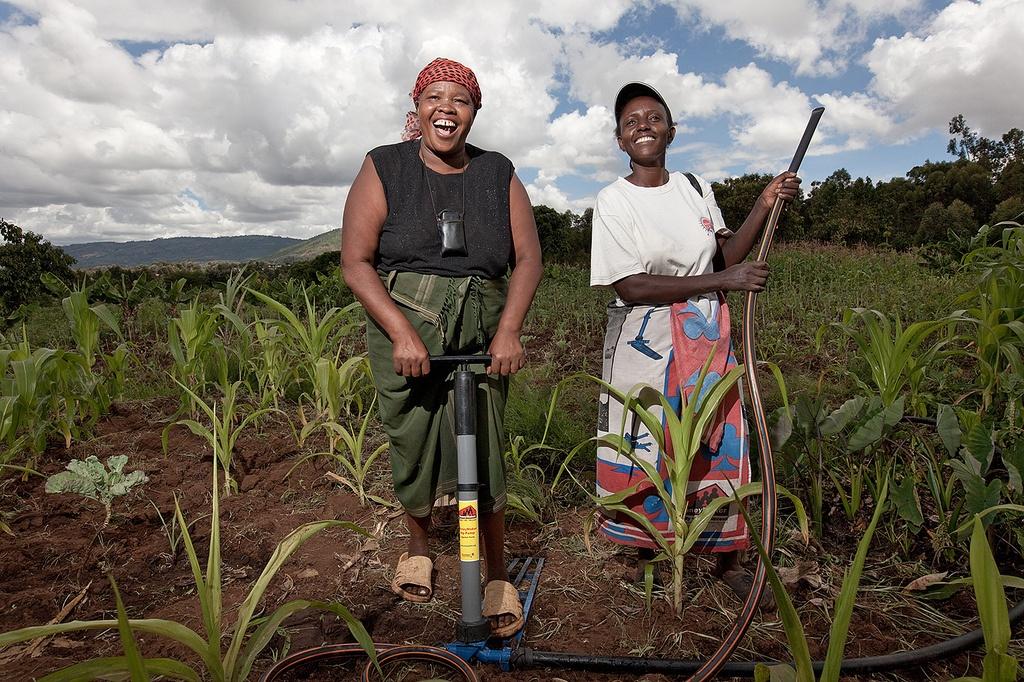

By Daniel Matthews
It’s easy to think of the small farm as a bastion of The Way Things Used to Be. And it’s comforting. But the reality of small, organic farms is that they are constantly seeking new ways to do more with technology. They’re seeking to increase production, build advanced networks with other farmers, and improve their reach to the consumer.
Population and food production
By 2050, the world’s population will hit 9.6 billion. Small farms will need to produce more food, even as climate change and evolving pests make this harder.
In places such as Africa — a continent with 54 nations, so large it can fit the U.S., China, India, Europe and Japan within its borders — small family farms grow more than 90 percent of all crops. Yet these farms are beset with production issues, including viruses spread by whiteflies. Empowering African farmers with new technologies to increase production is essential.
The genetically modified (GM) seed producer, Monsanto, could provide African farmers with genetically-altered seeds to grow plants that resist viruses. But this would be the equivalent of giving them a fish instead of teaching them how to catch it. And then charging them for more fish.
The farmers would not be able to maintain their own collections of virus-resistant seeds. They would need to buy them from Monsanto, effectively eliminating self-sustainability in African farming culture. And, only four countries in Africa even allow commercial farmers to plant GM crops.
Small farms in Tanzania have had more success employing organic farming practices: strategies such as crop rotation and planting a more diverse array of crops.
Beyond the most basic organic practices, America’s small farms can be the starting-point for implementing new technological solutions that small farms worldwide can employ. We’ve got the market for innovation. Our organic farms are intensely invested in remaining organic -- and competing with monoculture. The solutions our farms find now will inform sustainability around the world as the population, and the temperature, rises.
Production tech
Ample production starts with the soil. In order to analyze soil-quality/composition and determine soil water content, farmers can use Ground Penetrating Radar. GPR leaves the surface and subsurface untouched and undamaged. The farmer doesn’t have to do any digging, which cuts down on time, labor, and erosion. GPR uses ultra-wide spectrum radio frequency energy pulses, which bounce back to an antenna and show up as an image on the operator interface.
Once the farmer determines where it’s best to plant, work begins on cultivating a successful organic crop. Plowing causes soil compaction, water problems and erosion, and it also uses fossil fuels — which, given the amount of farming we do worldwide -- is problematic. The answer is no-till farming. To big ag, no-till means spraying herbicides to kill weeds and using specialized seeding equipment to plant without disturbing the soil. But this doesn’t make for organic produce.
Organic no-till involves cover crops: crops that kill the weeds but allow the primary crop to grow. A cover crop roller (pictured above) rolls out a cover crop mat and facilitates planting at the same time. Farmers who love to tinker can build their own.
No-till cuts down quite a bit on labor, compared with plowing rows. Oregon State University offers a cover crop calculator that also figures how much organic fertilizer the farmer needs, in addition to calculating nitrogen mineralization.
From AgSquared comes an app to help farmers with production. Whereas a big farm has the cash to employ multiple hands, the small farmer may be overwhelmed. AgSquared helps the farmer plan planting schedule, calculate seed orders, map field layouts, stay on track with cultivation, and keep detailed records.
The small farmer who can afford it might pick up an autonomous tractor, without having to worry about government regulations to the contrary. Self-driving tractors cut down on labor and facilitate precise use of space.
Because of the cost, and because plenty of small farms don’t need a full-sized one, autonomous tractors haven’t caught on with small farmers. What has caught on is the website Farm Hack, a community dedicated to sharing alternative tech solutions, open-sourced by community members. These solutions include the culticycle, a pedal-powered tractor built from recycled parts. It boasts no fossil fuel usage, less soil compaction, low price, and the added benefit of being an exercise machine.
Post-Production tech
In terms of networking, marketing, and selling, there are a ton of resources for organic farms. One primary example is LocalOrbit. This site claims to, “Support the innovative business models and regional diversity that are hallmarks of the New Food Economy.” Here, the internet is the technology. LocalOrbit is a network harnessing the internet, allowing farms to sell in multiple marketplaces from one account. It also supports farms with a built-in suite of back-end tools for marketing products, tracking customers, updating and monitoring inventory, and organizing delivery.
Other important apps include Square, the mobile card-payment system, which makes selling at farmer’s markets so much easier. To notify loyal customers about the upcoming market, the farmer can use the FarmFan app. FarmFan automatically texts participating customers an hour before market as a reminder. According to FarmFan, text messages have a, “97% open-rate within 3 minutes of sending,” and are incredibly effective. Once the customer checks in at the market they can receive loyalty rewards.
New economies
The sharing economy and the new food economy, when we get to the root of it, are the same thing. Both represent a modern modification of pre-industrialized work. Both take advantage of evolving tech to facilitate independent transmission of ideas and technologies peer-to-peer. And, both rely on cooperation, a proactive consideration for sustaining local economies and cultures.
Hopefully, with increased emphasis on sharing ideas and technologies, we’ll be able to feed those in the world who aren’t getting enough to eat as the future unfolds.
Image credits: 1) Flickr/DIVatUSAID 2) Flickr/NRCS Oregon 3) Flickr/Agrilife Today
Daniel Matthews is a writer and musician from Boise, Idaho. Please find him on Twitter @danielmatthews0
Top 10 Social Innovation Breakthroughs of 2015
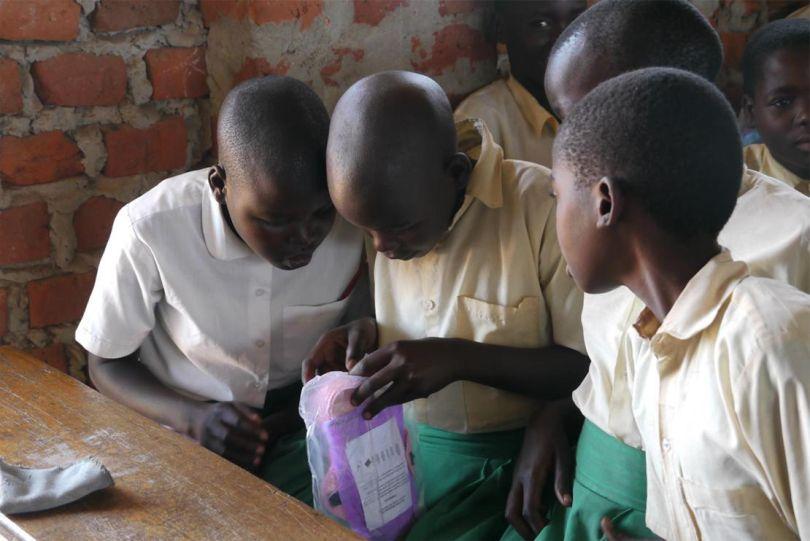

By Virgilia Kaur Pruthi and Cynthia Hellen
From New York City subways approving period advertisements to crowdsourced legislation, so far 2015 has been an incredible year for social innovation and entrepreneurship.
Here are our top picks based upon the following criteria: made a measurable impact in 2015; focused on solving a problem for a specific community; may be a product, organization or campaign. We’ve broken our top 10 breakthroughs into different categories ranging from education, technology, entrepreneurship and health to name a few.
Design
- Designers Guild for Justice is a community of 1,500+ designers and creatives who volunteer their talents toward some of the most pressing justice issues of our times: civil rights, environment, human rights, government reform, peace and more.
- Code.org is a nonprofit dedicated to teaching coding to young people around the world and increases participation of women and underrepresented students of color. The nonprofit became the most successful Indiegogo crowdsourced campaign that even Mark Zuckerberg and Priscilla Chan decided to donate.
- Thinx is looking to disrupt the $15 billion feminine hygiene market. Started off as a Kickstarter campaign, Thinx has evolved to change the way which the world talks about periods. Led by serial entrepreneur Miki Agrawal, Thinx underwear is made up of four ultra-thin micro-layers that all work together. The team developed the technology over three years before launching the product to ensure each and every pair is completely antimicrobial, moisture-wicking, leak-resistant and absorbent. If you haven’t done so already, check out their subway ads.
- Greenwave supports a new generation of ocean farmers working to restore the ecosystem. They even have a farm startup where they provide hands on training for apprentices to learn everything they need from seed to harvest. Enabling them with the tools they need to start their own farms.
- Inventure provides a solution that benefits both borrowers and lenders by creating standardized credit scores that increase efficiency, reduce costs, lower interest rates, and reduce risk thereby increasing the overall capital available. Their first product, InSight, is a SMS text-messaging based system that enables individuals to perform basic accounting, demonstrate their creditworthiness, and access financial services. Over 300 million people in India lack credit scores. The team is currently targeting the 66 million micro- and small businesses that currently lack access to growth capital.
- Possible is a nonprofit healthcare company that delivers high-quality, low-cost healthcare to the world’s poor in rural Nepal. They have treated over 276,000 patients since their inception with their volume doubling in the last two years.
- Digital Democracy provides both technology and training to communities in humanitarian and ecological hot spots around the world. From enabling hard to reach communities with remote access capabilities to monitoring forest change, the organization serves communities who truly value and welcome the positive changes.
- Glasshouse Policy is a nonprofit, non-partisan, think tank that produces citizen sourced policy recommendations informed via their crowdsourcing platform. Their first major campaign MobilityATX, was an open, transparent forum where all Austin residents submitted solutions around the city’s transportation problems. Within a span of three months, the think tank created an online and offline movement with a tangible deliverable of policy improvements to the city’s governance.
- Refugees United is a nonprofit tech whose mission is to reconnect lost loved ones with their families by using a worldwide database and any SMS-capable mobile phone. The user friendly, online global database holds over 405,000 profiles, which users can search through for their missing loved ones. This technology has proven incredibly useful during a time where the migrant crisis remains rampant in the Middle East and North African regions.
- The Path teaches meditation techniques in a way that young professionals can understand. Co-founder Dina Kaplan, who previously started Blip.tv, says: “Meditation literally makes you better at your job. If you meditate, you are learning mind control. So you are able to stay focused if you need to do a PowerPoint for your startup or write a chapter of your book.”
Image credit: Thinx
Virgilia Kaur Pruthi is an entrepreneur, community builder and writer. She is the Founder of the practice management tool Practice Well, organization dedicated to enabling personal development for millennial women called Network of Women, and author of the top selling book "An Immigrant's Guide To Making It In America." Virgilia has over 8 years of experience building and scaling technology products across the e-commerce, SaaS, health and government sectors.
Cynthia Hellen is the Founder and CEO of SMPLCT Lab, a global design firm that takes a human-centered, designed-based approach to help create sustainable products, services and experiences. She is a Technology Trainer at TechCamp Global, a program under the U.S. State Department’s Civil Society (CS) 2.0 initiative that connects civil society organizations (CSOs) across the globe with new and emerging technology resources to solve real world challenges and build digital capacity. Hellen serves as Chapter Leader of New York Women Social Entrepreneurs (NYWSE), a nonprofit promoting young women social entrepreneurs.
States Sue on Behalf of Big Coal to Stop the Clean Power Plan
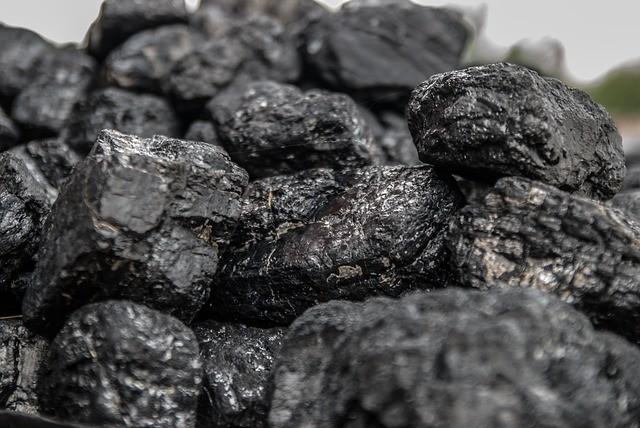

President Barack Obama has done a valiant job of promoting clean energy and climate action despite facing a Congress run by climate deniers. The hallmark of this effort is the Clean Power Plan, which seeks to reduce emissions from coal-fired power plants, one of the biggest emitters of greenhouse gases in the country.
Unfortunately, not everyone is on board. Coal companies, which pollute our environment and destroy our mountains without paying the true costs of their impact on our planet, want to continue polluting for free. And they're pushing 24 states to sue the Environmental Protection Agency and stop President Obama's plan.
“Time and again, we’ve seen big polluters and their allies attack the lifesaving protections that let our loved ones breathe easier and keep our clean energy economy thriving, and this challenge to the Clean Power Plan is no different,” said Mary Anne Hitt, director of the Sierra Club’s Beyond Coal Campaign, in a statement.
Coal, as we reported earlier this year, is a slowly dying, antiquated industry in America. Coal company stocks are down between 50 and 85 percent in the last year. This is not a power grab, but a last grasp of an industry that prefers to live in the past and not the future.
The states that are suing the EPA are those heavily dependent on coal (and, thus, their politicians dependent on coal-industry donations) or those who have drank the right-wing, anti-climate Kool Aid. They're not trying to find alternatives to regulations, such as a carbon tax, a cap-and-trade system, or other market solutions that would limit CO2 emissions but have been held up or killed in Congress. They are merely trying to stop progress and subject us to the worst of climate change in the years to come.
Thankfully, President Obama and the EPA have a lot of allies. Fifteen states are taking the opposite position, saying the EPA's moves are not only legal, but also necessary. Moreover, environmental organizations including the Sierra Club and Earthjustice are countering the reactionaries move.
“The Clean Power Plan follows the tradition of federal-state partnerships that courts have upheld time and again against constitutional challenge, “ said Howard Fox, counsel at Earthjustice, in a statement. “Constitutional arguments against the plan are last-ditch attempts to block the transition to clean energy that is already underway. Those who make such claims are on the wrong side of the law and the wrong side of history.”
When President Obama released the Clean Power Plan this past September, only one coal company spoke in favor it: Duke Energy, which, unlike its peers, has diversified into alternative energies,
Most environmental lawyers expect the Clean Power Plan to stand, but the problem is that a lengthy lawsuit could delay its implementation. We're already far behind on tackling climate change. Moreover, this could limit the leadership role that many hope that President Obama will take at the Paris climate talks coming up in a just six weeks.
Image Source: Pixabay
CSR After the Volkswagen Scandal


By Richard Hardyment
On Friday, Sept. 11, 2015, a press officer in Wolfsburg, Germany, sent on an announcement to the world’s media. “The Volkswagen Group has again been listed as the most sustainable automaker in the world’s leading sustainability ranking," it read. Martin Winterkorn, the chairman, commended “the entire team” for success in the Dow Jones Sustainability Index (DJSI) and drew attention to their top scores in codes of conduct, compliance, climate strategy and lifecycle assessment.
Exactly seven days later, the Environmental Protection Agency in Washington, D.C. announced officials would hold an urgent press call on “a recent development regarding a major automaker." In revelations that stunned the global business community, Volkswagen was accused of illegally using “cheat devices” to “evade clean air standards” for six years. So began a storm than has engulfed the automotive industry and raised profound questions for those working in responsible business and sustainability.
VW was quickly erased from the DJSI and automotive leaderboard. But critics have been queuing up to slam the whole concept of corporate responsibility based on self-assessment, assurance (provided for Volkswagen by PwC), ratings and awards. According to the U.K.’s Daily Telegraph, corporate social responsibility (CSR) has become a “dangerous racket” because “it allows companies to parade their virtue, and look good, while internal standards are allowed to slip."
Other commentators have alleged that VW will “severely tarnish this entire [CSR] movement” and “bad ethics is [now] good business." Even the Huffington Post lamented that “it’s going to be harder for anyone to believe a word” in sustainability reports.
In the weeks since the evidence of software manipulation first emerged, commentators have divided into two camps. Firstly, there are those who have sought to portray this as an isolated incident involving a few rogue employees. VW has been keen to push this line. Pick out the rotten apples, and the harvest will be saved. But this defense appears to be unravelling fast.
Media investigations allege systematic abuses over many years, involving managers at all levels of the organization. Far from being isolated, the bad behaviors appear endemic. The fact that the share prices of competitors have also fallen indicates that investors don’t believe this to be an isolated incident.
Those working in the auto industry know this type of cheating has been going on for years. In an effort to grow its diesel market rapidly, VW thought it could game the system and not get caught. Such unethical practices run counter to the automaker’s own code of conduct.
The company's code of conduct (downloadable as a PDF) is fascinating to read, in hindsight, and it has not received enough attention. It’s worth quoting a few extracts to illustrate the challenge in rebuilding responsible business:
- “We stand for responsible, honest actions.”
- “We ... make ecologically efficient advanced technologies available throughout the world.”
- “We are a partner to society and politics with respect to … ecologically sustainable … development."
- “We are obligated to the truth with respect to political institutions."
Interestingly, I’ve discovered that although former CEO Martin Winterkorn signed previous versions of the code of conduct, his name disappeared from a September 2015 version, and a “foreword” from board members became an anonymous “preamble."
Still, a pretty comprehensive, 24-page code of conduct exists. Perhaps it was ignored, given to new recruits and left in the desk drawer for evermore? Far from it. Here’s another fascinating fact from Volkswagen's website: More than 74,000 employees were trained in the company's code of conduct last year. Around 40 percent of these were face-to-face in a classroom, and the rest were online. In total, more than 185,000 employees received training on compliance topics in 2014. More than 1,700 audits were conducted at VW companies around the world; 140 cases on anti-corruption were investigated; 365 cases of suspected fraud were looked at; and 72 employees were fired as a result.
So, we have a conundrum. A seemingly extensive code of conduct was in place. Monitoring and compliance were up and running. But one of the biggest corporate scandals wasn’t caught. The company was clearly not asking the right questions or measuring and monitoring what really mattered.
So, does this mean that CSR is doomed? Nothing could be further from the truth. As a result of unethical and irresponsible business practices, VW’s share price fell by over 40 percent. In impacts that the Economist described as “cataclysmic," the company faces billions of dollars in fines as up to 11 million cars could be affected.
Around 230 lawsuits have already been filed, and requests for refunds could cause pain for years. In total, some analysts put the potential costs at around $33 billion. Meanwhile, the chief executive has resigned. Police raided the company's HQ, and untold damage has been done to the brand and its relationship with politicians, regulators, environmental groups, shareholders and consumers. If that doesn’t show why business integrity matters, what does?
It’s a severe body-blow to those who argue that corporate performance can be assessed on financial metrics alone. Far from dampening enthusiasm for responsible business practices, the VW scandal should accelerate it.
The question we must all ask is: How did everyone get it so wrong? Any assessment of how a company is performing requires honesty and transparency from the business. That is true across industries, whether disclosing sustainability or financial performance. Any system of assessment can only be based on what companies voluntarily share. When a company chooses to be less than transparent – or worse, deliberately falsify information – there is no system that will robustly and conclusively see through such deception.
The VW approach was such that even the Environmental Protection Agency, Federal Trade Commission and other regulatory bodies appear to have been unaware for some years of what the company was doing.
Time will tell, but it’s likely that Volkswagen’s internal compliance completely failed to pick up on this maleficence. However, a fascinating benchmark by data crunchers at eRevalue suggests that a careful look at the automaker's sustainability reports should have sounded alarm bells. References to particulate emissions and air quality in the company's sustainability reporting declining sharply compared to its competitors. Perhaps voluntarily disclosure – if analyzed properly – can help after all.
Whatever emerges from the ashes of VW, it is clear that this is not a failure of responsible business per se. Rather, it points to wider lessons for those who seek to plan, assess and report on companies’ non-financial performance. In particular, it requires all of us to ask how external agencies can better verify corporate claims so that information is not taken at face-value but subject to more careful scrutiny. The fact that investors have been dumping the shares and brand damage could last for years shows that responsible business is critical to success. It reinforces the basic premise of indices like the DJSI that a strong showing on social and environmental measures leads to enhanced shareholder returns in the long-run.
The story of VW is also a salutary reminder that there must never be a gap between performance and communications. Audi (part of the VW Group) has a slogan, “truth in engineering,” in the United States. As one professor of business ethics quipped, this could now be “engineering the truth."
Sustainability, and the values that underpin it, must be properly integrated into a business. If unethical business practices are not addressed and rectified, the company is at risk of major financial consequences. VW serves as a timely reminder that it’s fine to focus on rankings, reports, press releases and awards. But, fundamentally, it’s the outcomes and impacts of sustainability that create and destroy shareholder value.
Image credit: Pixabay
Richard Hardyment is an Associate Director at Corporate Citizenship, a global management consultancy specialising in corporate responsibility and sustainability.
This is Why We Drill: Chinese Company Aims to Buy Texas Oilfields
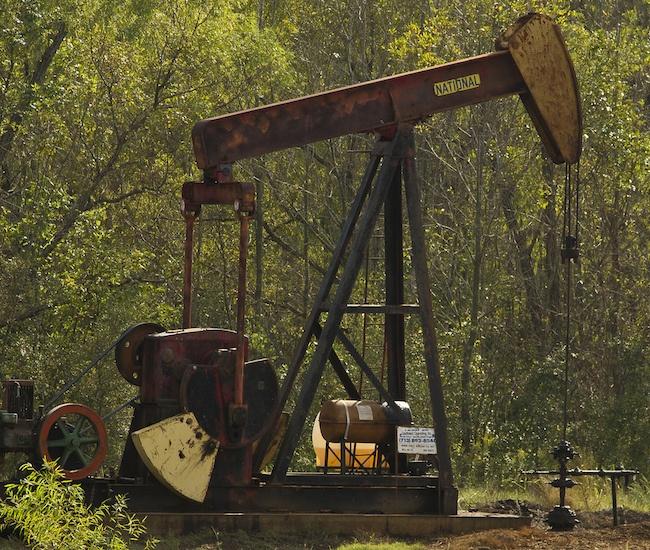

The U.S. may be winding down its fossil fuel dependency, but it appears that foreign companies have spotted an opportunity for investing in American oil and gas assets. In the latest development, the Chinese investment holding company, Yantai Xinchao Industry Co. Ltd., has filed documents indicating it will shell out $1.3 billion to buy oil fields in Texas.
The foreign ownership of U.S. oil fields adds a new twist to the political pressure that is being put to bear on lifting federal restrictions on crude oil exports from the U.S. Namely, for whom are the pro-export legislators speaking: their domestic constituents or their foreign investors?
China, renewable energy and fossil fuels
Before we get into the political implications, it's helpful to step back and look at the broader energy picture.
While China's carbon mismanagement has become the stuff of legend, more recently the country has taken action to pull itself into a clean energy future.
Among other moves, China's solar investments are skyrocketing, and just last month China reaffirmed that its cap-and-trade initiative, in the works since 2010, is on track for launch in 2017. The initiative will focus on key industrial carbon emitters.
One of China's more intriguing actions is a partnership with the Nature Conservancy announced last year. It involves an ecological mapping system aimed at generating innovative emissions-reduction strategies.
If China continues along this path, some observers anticipate that it could beat the U.S. to claim global leadership in carbon management. However, as with the U.S., China will need a relatively sizable fossil fuel supply chain for the foreseeable future -- and even if it doesn't, Chinese businesses will continue to seek profits wherever they are to be made, just as American businesses do.
Chinese company buys Texas oilfields
That brings us to the latest news out of Texas. With the U.S. oil and gas industry in free-fall, domestic oil and gas fields are in the crosshairs of global investors in search of a bargain. The energy journal Fuel Fix has been tracking the industry's shifting landscape under the pressure of declining prices. Earlier this week it noted Yantai Xinchao's oil field buy consisted of oil fields in the rich Permian Basin formation within Howard and Borden counties.
The deal involves a limited liability partnership called Ningbo Dingliang Huitong Equity Investment Center, the journal reported. That enables Yantai Xinchao to engineer the transaction through the newly created (as of June 2015) limited liability company, Moss Creek Resources, a subsidiary of Ningbo Dingliang. The Moss Creek connection provides the whole transaction with an address in Dallas, Texas.
So far, the deal is in the letter-of-intent phase, and it has gotten the seal of approval from the Committee on Foreign Investment in the United States, an inter-agency committee formed under the Treasury Department with the aim of ensuring that foreign investment in the U.S. economy does not compromise national security. (For more on the complexities of federal policies on foreign investment, check out this 2013 Congressional Research Service report.)
A wake-up call for the politics of U.S. energy production
The new transaction isn't the first time that China has cemented a position in U.S. fossil fuel production, though the trend is a relatively new one. China, as well as India, were reported to be on track for buying U.S. coal and shale gas assets back in 2010. One major transaction occurred in 2011, when China's Cnooc Ltd. nailed down a $570 million deal for oil and gas leases previously owned by the U.S. company Chesapeake Energy.
By 2012 the Wall Street Journal was reporting that Chinese companies had accumulated more than $17 billion worth of oil and gas deals in the U.S. and Canada, skirting around potential objections by working deals through minority stakeholder status.
As for the future, it's quite possible that the Committee on Foreign Investment will continue to approve additional deals for China-based companies in the U.S. oil and gas sector. The upside for local politicians would be an improved prospect for job retention and creation even as domestic ownership in the oil and gas industry shrinks.
There is a significant political downside, though. Evidence is accumulating that the local public health and safety impacts related to oil and gas extraction can result in more harm than good. Domestic oil and gas producers are already under increasing public scrutiny, and tracing responsibility for those impacts to foreign companies will further erode public support.
The growth of energy jobs in the wind and solar sectors also helps to weaken the job-creating argument for oil and gas. Texas is certainly no slouch in that regard. Just this week the state made waves for the spectacular growth of its renewable energy sector, and Texas municipal governments now own three of the top five spots in the nation for largest local user of clean energy.
In addition, the newly announced federal budget deal hints at a structural weakness in the pro-export argument. As part of the complex agreement to increase funding for non-defense programs the U.S. is selling down its Strategic Petroleum Reserve, which is a good indicator that the country has relaxed its overall dependency on oil.
TriplePundit has also noted that oil and gas operations in the U.S. have been marching into regions that previously hosted little or no such activity, leading to significant conflicts with existing economic activity that has already proven to benefit local communities. The involvement of Chinese companies in this sector could become particularly sensitive given ongoing tensions between that country and the U.S., most recently involving U.S. Navy maneuvers in the South China Sea.
The bottom line: we're guessing that the entry of Chinese companies into the U.S. oil and gas marketplace will draw more attention to the broader issue of foreign and global investment in extractive industries that involve significant risks and impacts for local communities. As public awareness of that trend grows, certain federal legislators will find it more difficult to make the case for supporting domestic producers by opening up the export market.
Of course, there's no harm in trying...
Image credit: East Texas oil well pump by Ray Bodden via flickr.com, creative commons license.
